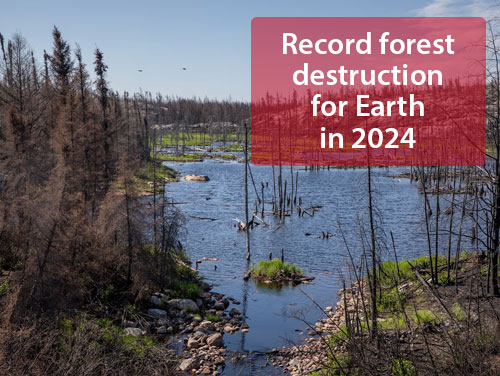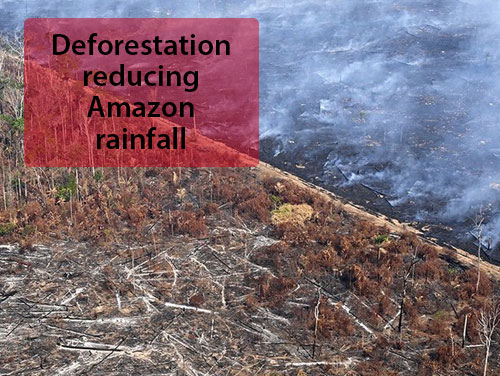It’s far worse than you think, and getting worser.
While the great unwashed seem to think that global warming has slowed, the reality is quite the opposite. In spite of the way these statistics are reported, concentrations of CO2 are increasing in the atmosphere and oceans and a sudden jump in methane is turbocharging climate collapse.
Rate of global sea levels rise continued to increase more than expected in 2024, due to thermal expansion as oceans warmed faster than predicted.
And CO2 stays there for thousands of years, as every molecule that spews forth remains. The 1.5° C threshold was a joke all along, but that is well behind us now as CO2 levels cross the 430 PPM mark for the first time. This year is projected to be the second year in a row to exceed that 1.5° C mark. There is no going back.
More frequent hot weather and droughts have dealt a significant blow to crop yields, especially for key grains like wheat, barley, and maize, according to a Stanford study published this week in Proceedings of the National Academy of Sciences.
Bolivia, Brazil lead record global forest loss
Brazil and Bolivia led forest destruction in 2024 as drought worsened fires and land was cleared for large-scale agriculture and cattle-farming.
Forest loss in Bolivia and across Latin America is part of a broader worldwide trend. New data released earlier this week by World Resources Institute’s Global Forest Watch found that global forest loss reached record highs in 2024, with almost twice as much tropical primary forest lost in 2024 as in the year before. That is equal to an area larger than Ireland.
.
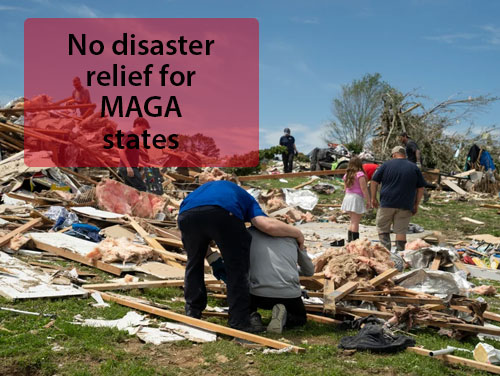
Surprise! Trump ignores climate disasters in MAGA states
Red state officials are pleading with the Trump administration for help in recovering from deadly disasters as President Donald Trump triggers frustration in states struck by tornadoes, floods and storms. Shocking, no one is responding. Perhaps they need to buy a ticket to his bit coin events.
Trump has left states, counties and tribes in limbo in states such as Mississippi, Missouri, Alabama and Arkansas up in the air on 17 disaster aid requests. More than half are a month old The grifter government continues massive cuts to personnel and budget.
More at Scientific American.
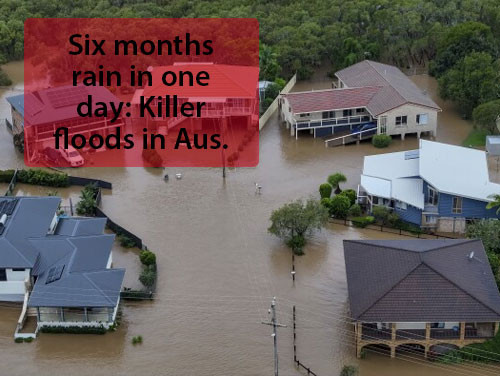
Australia faces yet another record flood event
It is somehow appropriate that Australia – with its commitment to more coal production – is considered by climate scientists to be the planet’s canary in a coal mine. About 50,000 people were trapped by record floodwaters, said to be the worst in memory, if not all time. The event has been declared a natural disaster as more torrential rains move toward Sydney and Newcastle.
The NSW State Emergency Service responded to over 535 flood rescues in 24 hours as six months of rain fell in one day.
Runaway deforestation reducing Amazonian rainfall
Numerous studies using satellite data, climate models, and field observations confirm that continued deforestation leads to measurable reductions in rainfall. Some models predict that deforestation beyond 20–25% of the Amazon’s original cover could trigger irreversible ecological changes.
Trees in the Amazon rainforest play a crucial role in the water cycle when they release water vapor, generating clouds and rainfall. When they are killed, precipitation drops. “Flying rivers” carry water vapor long distances; when they are weakened, the climate of vast areas of South America area affected.
Local weather patterns are disrupted, creating hotter, drier microclimates. reduce atmospheric humidity, and create drier, hotter microclimates that further reduce rainfall.
.
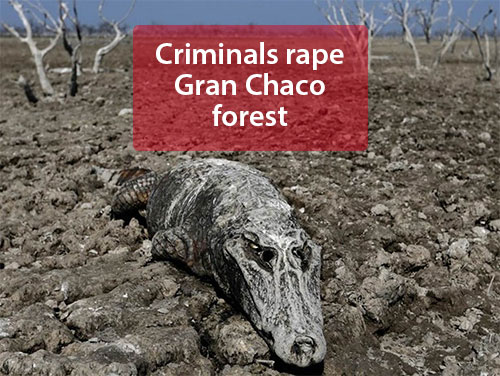
Invasion of criminal loggers lays waste to Gran Chaco forest
Over 8 million hectares of forest have been cleared in the Gram Chaco region of Argentina. The once pristine forests are being raped by illegal logging interests to make room for cattle ranching and soybean cultivation.
Consequences are global and local, as endangered species are wiped out, indigenous peoples are run out of their homes and irreversible desertification erodes soil and increases water scarcity. economically.
More heartbreak in the Guardian.
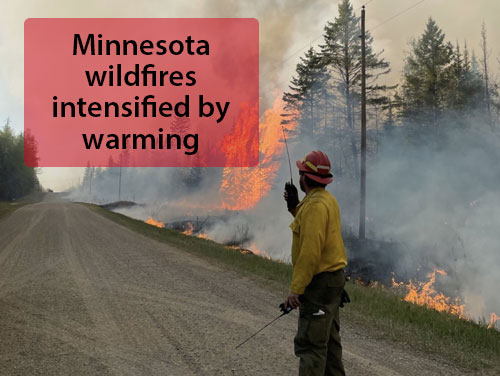
Minnesota wildfire season another harbinger of the coming shitstorm
Governor Waltz declared an emergency in northern Minnesota.
As of mid-May, over 40,000 acres have burned across the state—triple the typical annual total. These blazes have destroyed more than 140 structures, primarily in St. Louis and Lake counties.
Ever warmer temperatures, drought and low humidity are exacerbating the crisis.
Thousands evacuated in Indian GLOF landslides
More than 1,000 people were left stranded in the northeastern Indian state of Sikkim after landslides in the high-altitude region cut off access to several areas.
This region was the scene of a devastating GLOF event in 2023 as a glacial lake bursts it’s newly formed moraine dam, with torrential floods crashing 300 miles downstream, killing 55. Glacial Lake Outburst Floods are increasing as glaciers melt across the alpine regions of the planet.
Unpredictable GLOF events are becoming more common as the world warns:
.
Cedar and pine trees getting killed by global warming
As warming driven rising sea levels inundate the coasts of Chesapeake Bay cedar and pine trees are dying at unprecedented rates. Deciduous trees are dying as the salt water encroaches, giving way to marches dominated by reeds.

Higher arsenic content as rice harvests are threatened
Increased temperatures and Co2 emissions raise concentrations of arsenic in rice. Arsenic occurs naturally, but common methods of growing rice in inundated fields subject the crop to concentrated levels of the heavy metal, which causes tumors, cardiovascular and metabolic diseases. The potential consequences have been estimated in millions of additional cases of cancer by 2050, to which would be added those deriving from the increased risks for all other non-oncological pathologies, such as diabetes, heart attacks, neurocognitive disorders and problems during pregnancy and birth.
JAPAN SHORTAGE
As the most common cereal consumed worldwide, rice is already under pressure from warming factors. Japan is currently facing a rice shortage caused by record heat in 2023. As prices soar, the government has release its emergency rice stockpile for the first time in history.
Coffee now on the list of climate threatened luxury items.
But don’t worry, the wealthy will be able to afford it longer than you can.
Climate changed driven disruptive weather has affected supplies of coffee beans, which is driving up the price of your favorite not-remotely-necessary luxury cup. The benchmark that sets the global price of arabica coffee has more than doubled over the past year, with 25% of that surge coming since the start of 2025. For the first time, one pound of arabica costs more than $4 on commodity markets.
Unpredictable weather patterns have messed with agricultural production around the world. Chocolate prices are also up sharply in 2025 with higher temperatures and rainfall levels spoiling cacao yields in West Africa
.

“We used to swim to the island, now we walk.”
Alexandria is one of the world’s sinking cities, along with Venice, Miami, Lagos, Jakarta and others. An IPCC report predicts that with global sea levels rising at the current rate, and without adequate preventive measures, thousands of kilometers of the Nile delta could be fully submerged by 2100.
Like the rest of Egypt’s Mediterranean coast around the delta, El Max also faces several other environmental risks, including land subsidence, soil erosion, earthquakes and water pollution from nearby petrochemical plants, which all add to the increasing vulnerability of the area.
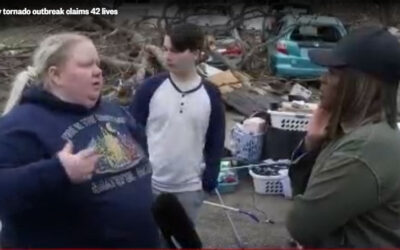
NOAA targeted as lethal storms and fires smash records
At least 42 people are dead after powerful storms swept through the Midwest and the South over the weekend and drenched parts of the Northeast.
Multiple states woke up Monday morning to damage from dust storms, wildfires, rain and tornadoes following nearly 1,500 storm reports across the country from Friday to Sunday.
Two children died in Transylvania County, North Carolina, after a tree fell through the center of their family’s trailer early Sunday. Firefighters found the boys — ages 11 and 13 — “trapped directly under the tree and other debris,”
Rapid Warming Drives Massive Flood Increase In Himalayas/Asia as glaciers melt
Rising temps have triggered a 25 year increase in flood risk and unpredictability in High Mountain Asia. The study confirms that planetary heating from the burning of oil, coal, and gas is driving the rise in all four of the main types of floods seen in the region.
.

Sea level rise is increasing 50% faster than 30 years ago.
Since 1880, global sea levels have risen approximately 8–9 inches (21–24 cm), with rates accelerating in recent decades. Between 1993 and 2002, the ocean rose by 24 mm. Over the past decade, that number increased to 36 mm. While 3.6 mm per year seems small, it has already intensified coastal flooding and storm surges. By 2100, over 410 million people could be at risk. climate.gov
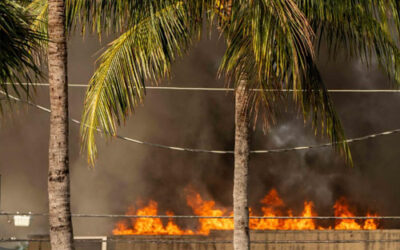
Drought flood drought as wildfires cross Carolinas
Weather whiplash continues to take it’s tool in the Carolinas. Evacuations continues amidst an emergency evacuation from wildfires in North and South Carolina.
GovernorEver
